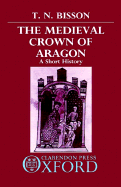|
The only valid claims to the throne would be dynastic in male primogeniture.
The first claimant was James of Urgel who based his claims on the fact that he was the great-grandson of Alfonso IV (who was the great-grandson of James I).
The second claimant was Alfonso, Duke of Gandia, son of Peter Count of Ribagorza and grandson of James II. Alfonso died in the course of the discussions about the succession and his son, also named Alfonso, took his place.
The third claimant was Louis, Duke of Calabria. He was the son of Violante of Anjou, who was daughter of King John.
The fourth was Ferdinand of Antequera, Infante (Prince) of Castile, son of Eleanor (who had married John of Castile) and grandson of Peter IV.
The fifth claimant was Frederick, Count of Luna, an illegitimate son of the Infante Martin (son of King Martin I, but had died before his father).
The sixth was John, Count of Prades, brother of the first Alfonso (the second claimant), thinking his rights were better than those of his nephew.
 |
The fifth claimant, Frederick, could not have any real dynastic claims as he was not born of a legitimate marriage.

As James Count of Urgel, Alfonso Duke of Gandia and John Count of Prades all claimed and could verify succession in the male line, their claims were better than the claims of Louis Duke of Calabria and Ferdinand Infante of Castile (as they could only claim succession through the female line).

It is quite clear that of James, Alfonso and John, the person being the closest relative to Martin was James of Urgel. Also J.N. Hillgarth in “The Spanish Kingdoms 1250-1516” says, when discussing the “compromise” of Caspe, that “among the descendants in the male line, the closest relation to Martí was Jaume, count of Urgel …” (op.cit. vol 2, p. 229.
Any successor other than James of Urgel must have been appointed on grounds other than dynastic and so in opposition to the Will of James I and the law of succession.

This point is also stressed by T.N. Bisson, who when discussing the “compromise” of Caspe points out that “… the issue was (or became) political rather than simply legal, a utilitarian question of which candidate with some dynastic claim would make the best king” (“The medieval crown of Aragon”, ss. 135-6).
Next page |







